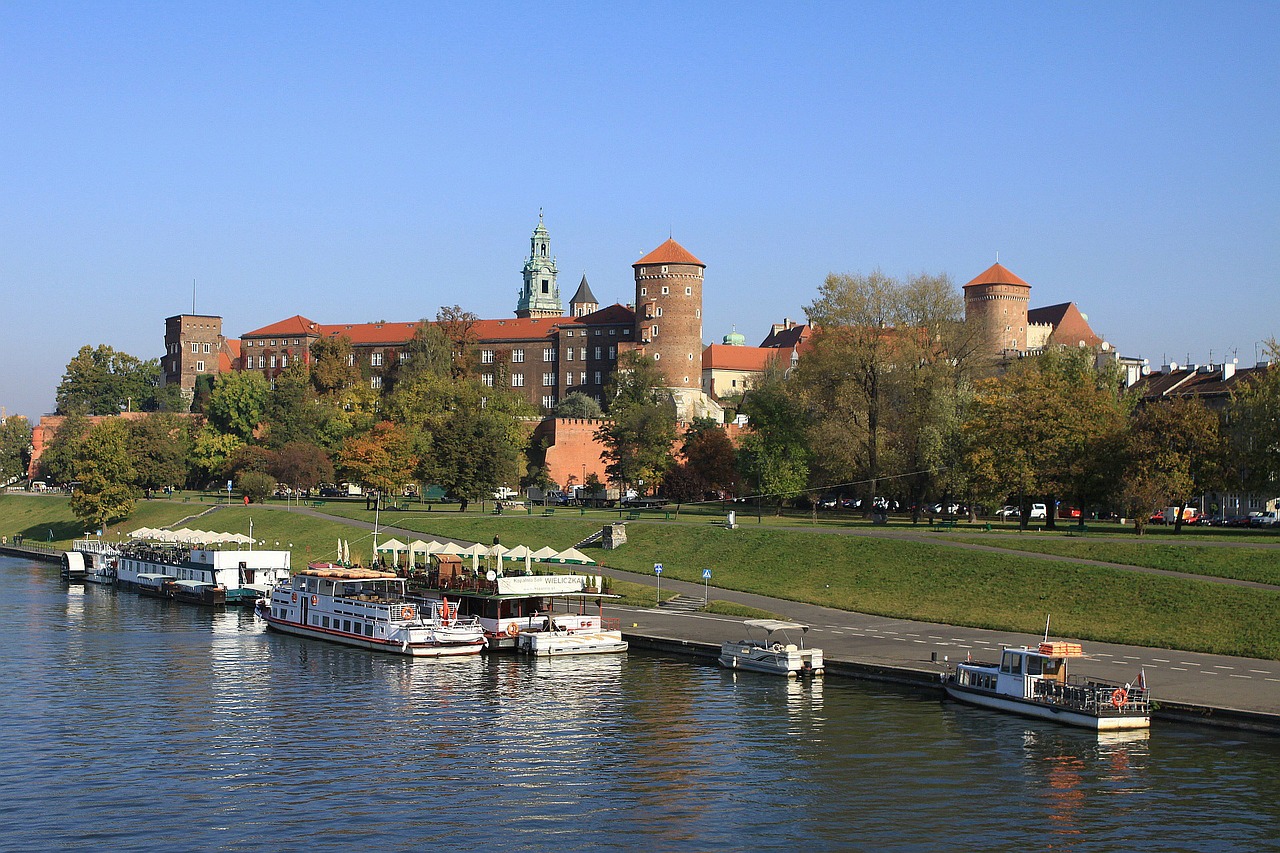Contents
Key Facts
• Monument located in Planty Park at the mouth of Łobzowska Street in Kraków
• Depicts the title character from Juliusz Słowacki's romantic drama "Lilla Weneda" (1840)
• Shows the moment when Lilla Weneda tames serpents while playing the harp
• Funded by Dr. Henryk Jordan to commemorate the great Polish poet Słowacki
• Represents one of the most tragic characters in Polish Romantic literature
• Part of Kraków's rich collection of literary monuments scattered throughout the historic center
Overview
The Lilla Weneda monument stands as one of Kraków's most evocative literary sculptures, positioned in the tranquil Planty park where the evening light beautifully illuminates the intricate harp details. Located at the mouth of Łobzowska Street, this remarkable monument captures a pivotal supernatural moment from Juliusz Słowacki's tragic drama, depicting the titular priestess in her mystical act of taming serpents through the mesmerizing power of her harp music.
Standing before this sculpture, visitors are immediately struck by Lilla Weneda's serene yet powerful expression, which conveys both grace and unwavering determination even as serpents coil menacingly at the monument's base.
Historical Background
The Literary Source
Juliusz Słowacki (1809-1849), considered alongside Adam Mickiewicz as one of Poland's greatest Romantic poets, wrote "Lilla Weneda" in 1840 during his Parisian exile. This five-act tragedy explores Slavic mythology and Polish national identity through the story of the ancient Lekhitic tribe and their spiritual conflicts with Germanic invaders.
Lilla Weneda serves as both a priestess of the Lekhitic people and a prophetic figure who possesses supernatural powers. Her character embodies the tragic fate of the Polish nation while representing the spiritual and cultural strength necessary to preserve national identity during times of foreign domination. The drama reflects Słowacki's mature philosophical period, when he developed his theory of "King-Spirit" (Król-Duch), emphasizing the role of great individuals in shaping national destiny.
The play exemplifies key Romantic literary principles: the integration of folklore and national mythology, the concept of the poet as a national prophet, and the belief in art's transformative power. Lilla Weneda's ability to charm serpents through her harp music symbolizes how artistic and spiritual forces can triumph over destructive powers.
Monument's Creation and Patronage
The monument was generously funded by Dr. Henryk Jordan (1842-1907), the distinguished physician, pedagogue, and social reformer who revolutionized physical education and public health in Austria-Hungary. Jordan, a professor at Jagiellonian University's Medical Faculty, established Poland's first public park for physical exercise and pioneered therapeutic gymnastics.
Jordan's decision to commemorate Słowacki through this particular character demonstrates his profound understanding of Polish literature and recognition of Lilla Weneda's symbolic importance in representing Poland's cultural resilience. His patronage reflects the 19th-century tradition of educated professionals supporting public monuments that celebrated national literary heritage.
Artistic Description
The Sculptural Composition
The monument masterfully captures the climactic moment from Act IV of Słowacki's drama, when Lilla Weneda confronts the serpents sent by hostile forces. The sculpture's dynamic composition includes:
- Lilla Weneda in flowing classical robes, her upright posture conveying both ethereal grace and resolute courage
- The intricately detailed harp, positioned to emphasize its role as both musical instrument and spiritual weapon
- Multiple bronze serpents coiled dramatically around the monument's base, their forms suggesting both threat and submission
- Baroque-influenced movement and energy that creates visual tension between the serene figure above and the writhing forms below
Symbolic and Allegorical Elements
The monument's artistic elements carry multiple layers of meaning rooted in Romantic symbolism:
- The Harp – Represents the civilizing and transformative power of art, music, and poetry in Polish culture
- The Serpents – Symbolize evil forces, foreign enemies, and internal divisions threatening Polish national unity
- Lilla Weneda's Dignified Stance – Embodies spiritual authority, cultural continuity, and the ultimate triumph of good over destructive forces
- The Vertical Composition – Suggests the elevation of spirit over material threats, a key theme in Romantic philosophy
Location and Cultural Context
Planty Park Setting
The monument's strategic placement within Kraków's Planty park system enhances its cultural significance. This unique green belt, created in the early 19th century on the site of medieval fortifications, provides an ideal setting for contemplating Polish Romantic themes. The location offers visitors a peaceful environment away from street traffic, allowing for reflective engagement with Słowacki's literary legacy.
The positioning at Łobzowska Street's entrance creates natural foot traffic from tourists exploring the Old Town, while the surrounding mature trees frame the sculpture beautifully throughout different seasons.
Visitor Experience and Practical Information
Optimal viewing conditions: The monument is best appreciated from the southeastern approach, which provides clear sightlines to both Lilla Weneda's expression and the serpent details. Early morning and late afternoon lighting create particularly dramatic shadows that emphasize the sculpture's three-dimensional qualities.
Accessibility: The location within Planty Park ensures easy pedestrian access from multiple directions, with nearby tram stops on Basztowa Street providing convenient public transportation connections.
Cultural Legacy and Educational Value
Literary Tourism and Education
The monument functions as an outdoor literature classroom, introducing visitors to Słowacki's dramatic works and the broader context of Polish Romantic movement. It demonstrates how 19th-century Polish culture transformed ancient Slavic mythology into powerful national allegories that sustained cultural identity during periods of political partition.
For international visitors, the sculpture provides accessible entry into understanding Polish literary traditions, national symbolism, and the historical relationship between art and political resistance.
Integration with Kraków's Cultural Landscape
As part of Kraków's comprehensive network of literary monuments, the Lilla Weneda sculpture reinforces the city's designation as a UNESCO World Heritage site and its continuing role as Poland's cultural capital. It complements nearby monuments to other major Polish writers, creating a cohesive cultural narrative throughout the historic district.
The monument exemplifies successful public art that serves multiple functions: honoring literary achievement, providing aesthetic enhancement to urban space, and offering educational opportunities for diverse audiences. It stands as a lasting testament to both Słowacki's artistic vision and Dr. Henryk Jordan's commitment to public cultural education.
